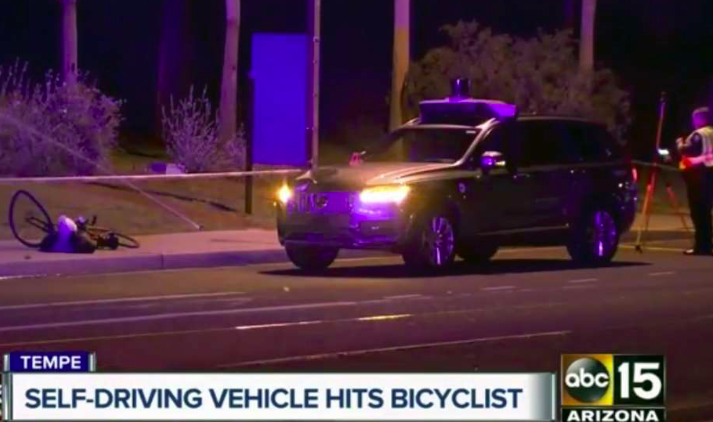More details are emerging about how an Uber self-driving car struck and killed a woman in Tempe, Arizona, raising red flags about the testing of autonomous vehicles on city streets.
Tempe police rushed to absolve Uber since the victim, Elaine Herzberg, was outside a crosswalk, according to the Phoenix New Times. But the paper's Ray Stern reports that it's common for people to cross midblock at that location -- something a human driver may have anticipated.
Police also said the Uber car was exceeding the speed limit, traveling 38 mph in a 35 mph zone, according to the San Francisco Chronicle, and that neither the vehicle nor the person behind the wheel, who is supposed to take control to prevent collisions, engaged the brake "significantly" prior to impact.
Beyond the particulars of the crash, which is still the subject of an open investigation, transportation officials and safety advocates warn that the incident highlights the dangers of allowing autonomous vehicle testing on public streets without clear safety standards or guidelines.
Uber's program has only logged a few million miles in self-driving mode -- crossing the 2 million mile threshold in September while adding a million miles every 100 days, according to Forbes. Meanwhile, human drivers in the U.S. traveled about 86 million miles for every traffic fatality in 2016, reports the Insurance Institute for Highway Safety. (Other companies, including Tesla and Waymo, have compiled more mileage than Uber.)
Arizona has become a testing ground for autonomous vehicles in part because of its hands-off approach to regulation. And last month, the California DMV passed a rule that would allow autonomous vehicles on public streets with only a remote operator to intervene in case of emergency.
At the federal level, U.S. DOT has only issued voluntary guidelines for autonomous vehicle companies. Legislation pending in Congress right now would allow companies to not just test AVs but sell them to consumers. The bill, AV START, passed unanimously in the House but has stalled in the Senate.
Autonomous vehicles have the potential to be safer than human drivers, but these testing arrangements are proceeding with no agreed-upon safety standard to assess the technology.
The National Association of City Transportation Officials said in a statement that firm guidelines should be established because "the current model for real-life testing of autonomous vehicles does not ensure everyone’s safety."
"In order to be compatible with life on city streets, AV technology must be able to safely interact with people on bikes, on foot, or exiting a parked car on the street, in or out of the crosswalk, at any time of day or night," said NACTO Executive Director Linda Bailey. "Responsible companies should support a safety standard and call for others to meet one as well."
Meanwhile, in the absence of such a standard, "the American public is serving as crash test dummies," said Cathy Chase of Advocates for Highway and Auto Safety, an organization founded by the insurance industry and consumer watchdogs. "I see this as an urgent call to action."
Chase wants to see an across-the-board pause on further loosening of autonomous vehicle regulations until the National Transportation Safety Board, which is investigating the Tempe crash, releases recommendations.
As the Tempe crash illustrates, detecting people walking or biking is a known weakness of self-driving cars. A number of active transportation advocacy organizations objected to the federal AV START bill on the grounds that the technology is not advanced enough to safely react to pedestrians, cyclists, or people in wheelchairs.
Advocates for Highway and Auto Safety has 12 recommendations to improve the legislation. One thing the public should insist on, says Chase, is a "vision test" for vehicles operating on public roadways. Just like a human driver would need to be able to spot distant objects and react to them, so should autonomous vehicles.
Relaying information from Tempe police, the SF Chronicle reported that Herzberg, the crash victim, was walking a bike "laden with plastic shopping bags," implying that Uber was not at fault. But that's the kind of scenario that arises on city streets all the time in real life.
"If an AV cannot properly react to that type of situation it should not be on the road," Chase said.





